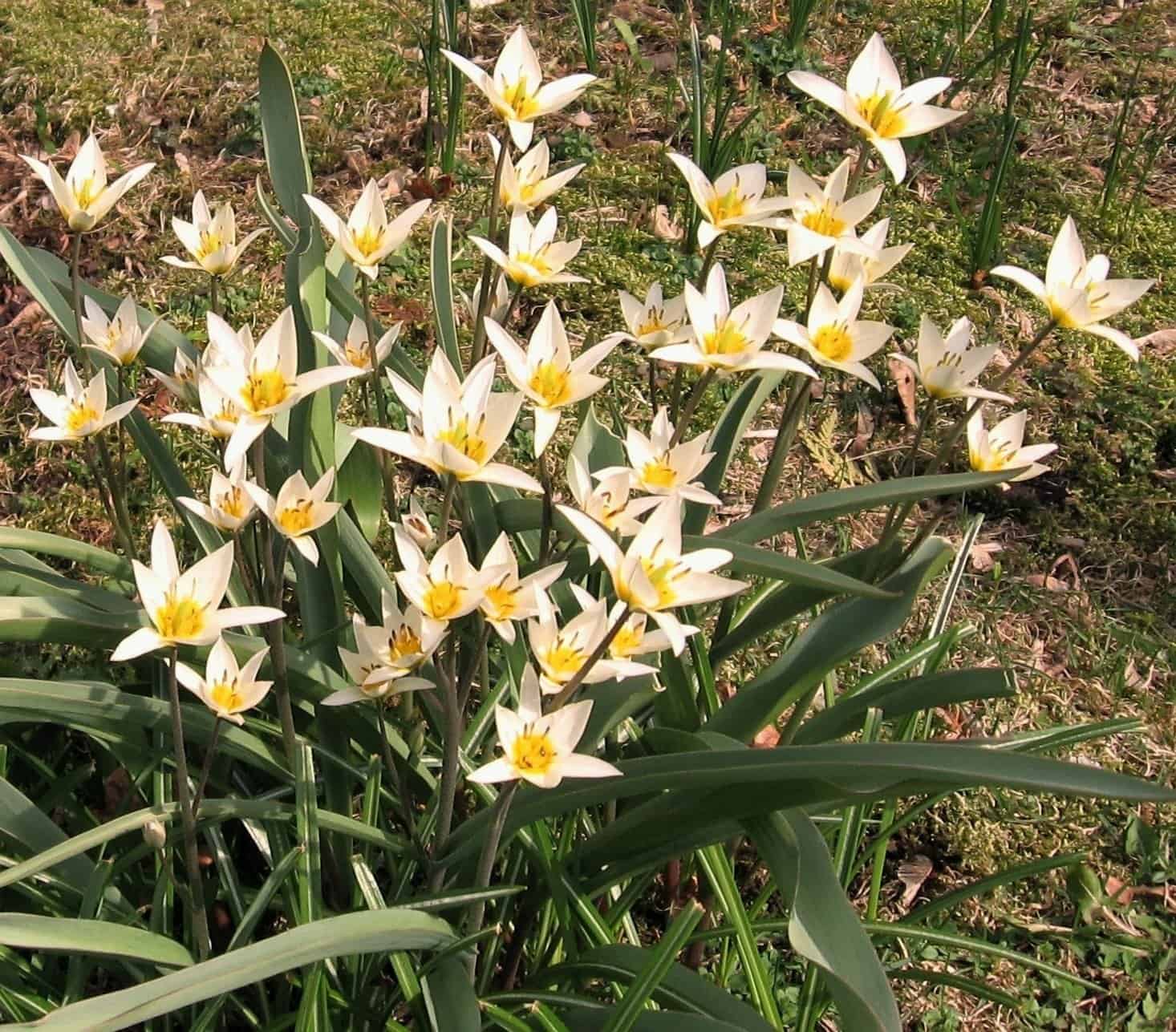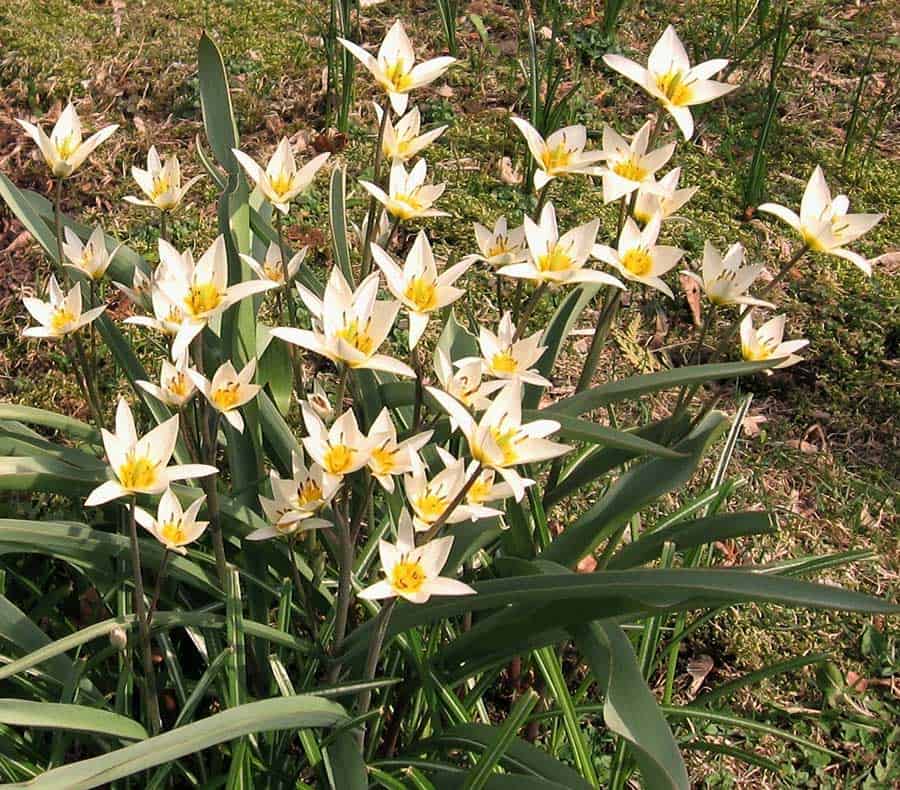When small early bulbs — crocus, species tulips, puschkinia and others — are in bloom, it’s an encouraging sight for they hint at the bigger bulb show to follow. They’re also the easiest of the fall-planted bulbs to incorporate into a garden because of their small size; they can be tucked in almost anywhere there’s a square inch of bare soil. But that’s not the only place these early risers can shine. Lawns with a few random drifts of naturalized crocus or muscari do much to lift the spirits, too. By the time the lawn needs mowing, the flowers and foliage have disappeared. “The floriferous lawn” makes a good case for incorporating spring blooms into our turf spaces.

Making a case for easy-going daffodils
For me, daffodils are nearly the perfect spring bulb. Choosing early-, mid- and late-season types ensures blooms from early April to late May. They perennialize easily, unlike glamorous hybrid tulips. They gradually increase over time in a mannerly fashion, unlike rambunctious muscari and Siberian squills. They’re fragrant and make beautiful bouquets. Best of all, squirrels don’t bother them. I’ve made a note to add more this fall, including “Pink Charm narcissus.”
The aftermath of fading daffodil foliage is considered unsightly by some, but don’t be tempted to twist, braid, bundle or trim the foliage while the leaves are still green if you want daffodil blooms next year. Once the leaves have yellowed — a signal that they have finished providing nourishment for next year’s flowers — they can be removed.
Timing for dormant oils
If applying a dormant horticultural oil is part of your arsenal against overwintering pests, now may be the time to apply it. According to ONnurserycrops, temperatures in Southern Ontario may be in the right range — slightly above freezing with no freezing temperatures, extremely high temperatures or rain in the forecast. Also key: Plants haven’t broken dormancy. Depending on the spring, it can be a relatively small window of opportunity.
Pests that can be managed with dormant oils include scale on magnolias, fruit trees, some maples, some evergreens, viburnums and tuliptree. Not all woody plants can tolerate application, however. For a list of the exceptions, see “Dos and don’ts of dormant oils,” which also explains the use of lighter horticultural oils in summer.
De-mystifying hydrangea pruning
Hydrangeas continue to be popular shrubs, and it seems as if plant breeders bring dozens of new ones to market every year. These new varieties of smooth-leaf, oak-leaf, big-leaf and panicle types always trigger questions from gardeners as to when and how to prune these different types. Some require little or no pruning, others are pruned in early spring and what do you do with those that re-bloom? The National Garden Bureau helps you get familiar with the different types of hydrangeas and their pruning requirements. “Bountiful midsummer flowers: Hardy hydrangeas” has advice, too.
Stocking up on bulk goods
Have you purchased whatever soil amendments, potting soils or other bulk goods your garden may need this spring? There’s nothing more frustrating than being in the midst of a gloriously big messy project only to realize you’re out of materials and the garden-supply store closes in 10 minutes. In addition to a bale of potting mix for the containers, I’ve loaded up on bags of composted manure for the raised beds of vegetables and annual flowers. I’m not particular about bagged manure—either cow or sheep will do. This year, the co-op had bags of composted chicken manure available, so I picked up a few of those, too. Frankly, my choices aren’t based on scientific research, but merely what’s handy and economical. Garden Myths gives a more analytical approach to the nutrient content of various manures, both composted and fresh.

